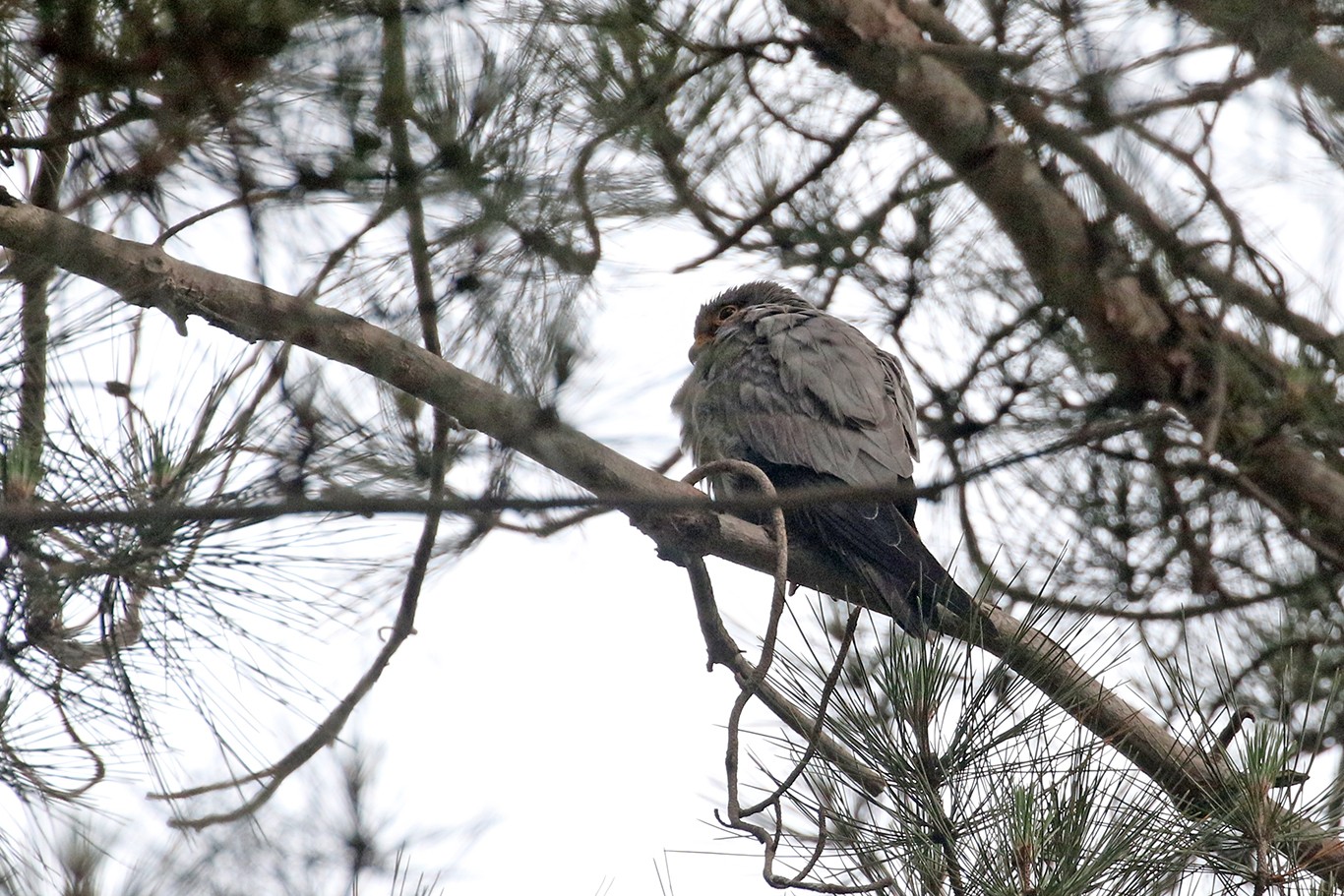Sooty Falcon
A species of True Falcons Scientific name : Falco concolor Genus : True Falcons
Sooty Falcon, A species of True Falcons
Botanical name: Falco concolor
Genus: True Falcons
Content
Description General Info
 Photo By Charley Hesse TROPICAL BIRDING
Photo By Charley Hesse TROPICAL BIRDING Description
This is an elegant bird of prey, 32–37 cm long with a 78–90 cm wingspan. It is shaped like a large hobby or a small Eleonora's falcon, with its long pointed wings, long tail and slim body. The adults are blue-grey, and lack the black underwing coverts of the Eleonora's falcon. The young bird is like a large juvenile hobby, or small juvenile Eleanora's falcon. Its dark trailing edge to the wings and tail distinguish it from the former species, and it lacks the underwing contrast caused by the dark coverts of the larger falcon. 
Size
36 cm
Nest Placement
Cliff
Feeding Habits
Sooty Falcon's diet varies seasonally, feeding on migrating small birds during the breeding season, while switching to insects like locusts and dragonflies in winter. They exhibit unique hunting behaviors such as capturing prey in-flight mainly at dawn and dusk, and sometimes hunting in groups, often alongside other falcons.
Habitat
Sooty Falcon, typically inhabits hot, arid zones characterized by rugged desert landscapes with features such as canyons and cliffs. These regions are commonly devoid of vegetation and can include small, isolated coral islands. During the winter, sooty Falcon moves to much wetter regions, which may include open woodlands, savanna, edges of forests, marshes, and paddy fields, often located near bodies of water, with the bird roosting in trees.
Dite type
Carnivorous
General Info
Feeding Habits
Bird food type
Distribution Area
This species breeds on islands and coastal or desert cliffs from Libya to Pakistan). It is a long-distance migrant, wintering in east Africa and south to Madagascar and north-eastern South Africa. Increasingly regular sightings and a lack of historical records suggests that the wintering range has expanded south in recent decades. It is a rare vagrant north of its breeding range. 
Species Status
It was formerly classified as Least Concern by the IUCN, but has recently been shown to be rarer than formerly believed. Consequently, it was uplisted to Vulnerable status in 2017. The breeding population of Sooty falcons on the islands of northern Oman is in decline, with human disturbance on accessible islands a likely cause, as falcons breeding close to beaches have lower nesting success than those breeding further away. 

 Photo By Charley Hesse TROPICAL BIRDING
Photo By Charley Hesse TROPICAL BIRDING Scientific Classification
Phylum
Chordates Class
Birds Order
Diurnal Birds of Prey Family
Falcons and caracaras Genus
True Falcons Species
Sooty Falcon